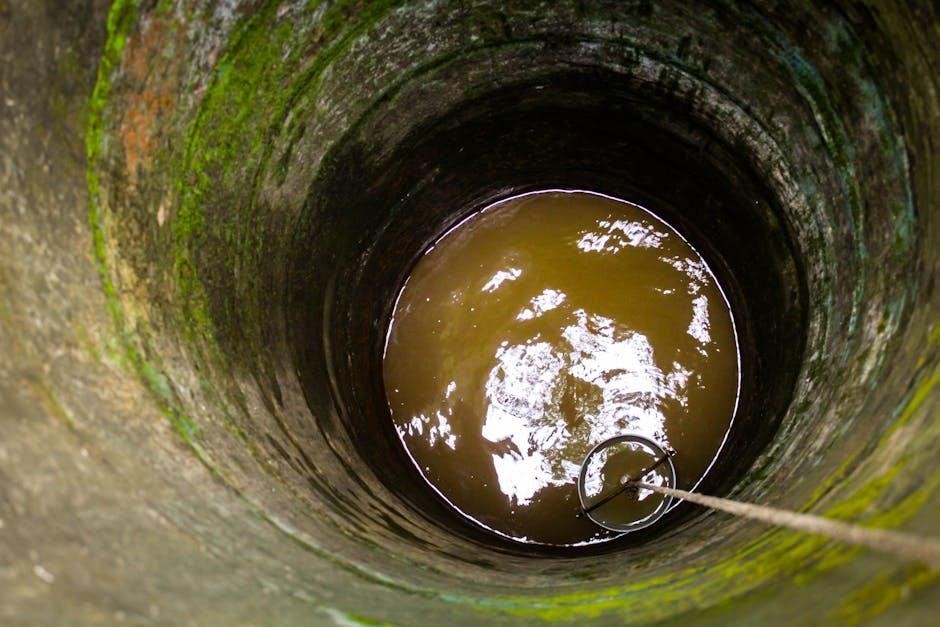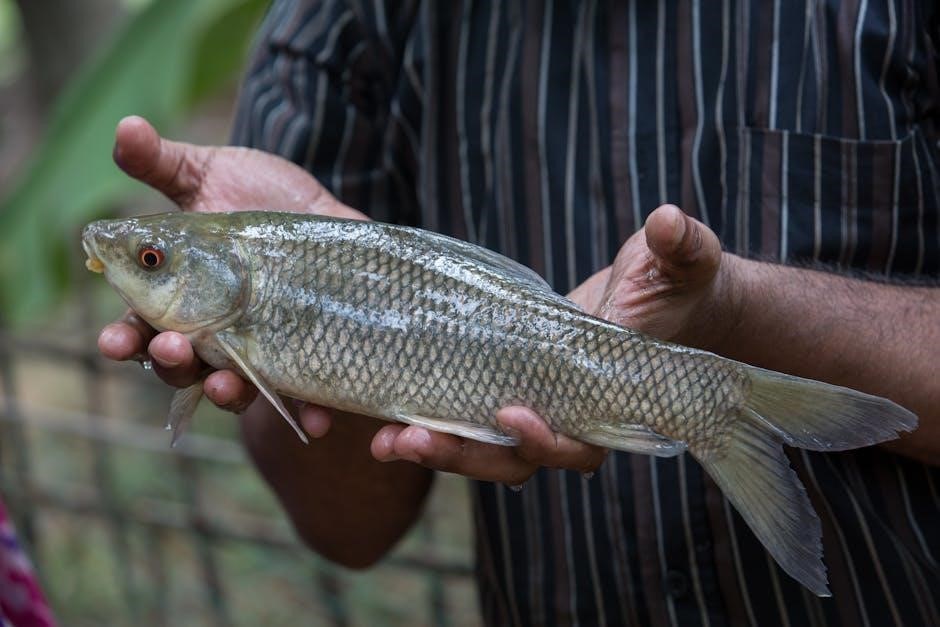Safety Instructions for Using the Butterball XL Deep Fryer
Always read the manual before use. Ensure the fryer is placed on a stable, heat-resistant surface. Use protective gloves and tongs to handle hot components. Keep children away while operating. Never leave the fryer unattended during cooking. Avoid overheating by following recommended oil levels and temperatures. Allow the fryer to cool completely before cleaning.
1.1 Essential Safety Precautions
Always wear protective gloves and use long, sturdy cooking tools to handle hot components. Ensure the fryer is placed on a stable, heat-resistant surface away from children. Never leave the fryer unattended while in operation. Avoid overheating by adhering to recommended oil levels and temperatures. Keep the heating element properly plugged in and avoid using damaged cords. Allow the fryer to cool completely before cleaning or storing. Follow all instructions in the manual to prevent accidents and ensure safe operation.
- Use protective gloves and long-handled tools for safe handling;
- Keep children and pets away from the fryer during use.
- Never touch hot surfaces with bare hands.
- Ensure proper ventilation to avoid fumes buildup.
1.2 Proper Handling of the Heating Element
Never touch the heating element with bare hands, as it becomes extremely hot during operation. Use protective gloves or tongs to handle any components near the heating area. Ensure the heating element is securely plugged into a grounded outlet and avoid using damaged cords. The heating element will only activate when properly assembled and connected. Keep the heating element clean and free from oil splatters to maintain efficiency. Avoid exposing the heating element to water or moisture, as this can cause damage or electrical hazards. Always follow the manual’s guidelines for heating element maintenance and operation.
- Avoid touching the heating element during or after use.
- Use only approved cords and outlets for operation.
- Keep the heating element dry and clean.
1.3 Use of Protective Gloves and Cooking Tools
Wear heat-resistant gloves when handling the fryer or turkey to prevent burns. Use long, sturdy cooking tools, such as tongs or slotted spoons, to safely lower and remove the turkey. Never use bare hands or flimsy utensils, as hot oil and steam can cause severe injury. Ensure gloves and tools are dry to avoid accidental slips. Keep a pair of oven mitts nearby for additional protection when moving or adjusting components. Proper use of protective gear minimizes risks and ensures a safer cooking experience.
- Heat-resistant gloves protect hands from burns.
- Use sturdy tools to handle hot food safely.
- Keep tools and gloves dry to prevent accidents.

Key Features of the Butterball XL Deep Fryer
Always wear heat-resistant gloves when handling hot components or the turkey. Use long, sturdy cooking tools like tongs or slotted spoons to safely lower and remove food. Avoid using bare hands or flimsy utensils, as hot oil and steam can cause severe burns. Ensure gloves and tools are dry to prevent accidental slips. This ensures a safer cooking experience and protects against potential hazards.
- Heat-resistant gloves prevent burns from hot surfaces.
- Sturdy tools minimize risks during food handling.
- Dry gloves and tools reduce slipping accidents.
2.1 Extra-Large Cooking Capacity
The Butterball XL Deep Fryer boasts an extra-large cooking capacity, accommodating turkeys up to 20 pounds. This feature ensures even cooking for larger meals, making it ideal for families or gatherings. The spacious design allows for efficient frying, ensuring crispy results without overcrowding. Perfect for whole turkeys or bulky cuts of meat, this fryer delivers consistent performance for hearty cooking needs.
- Handles turkeys up to 20 pounds.
- Spacious design prevents overcrowding.
- Ensures even, crispy frying results.
2.2 Indoor Use Recommendations
The Butterball XL Deep Fryer is designed specifically for indoor use, offering a convenient and safe way to fry turkeys in the comfort of your home. Its compact design and electric operation make it ideal for kitchen countertops. Always place the fryer on a stable, heat-resistant surface, away from flammable materials. Ensure proper ventilation to avoid oil vapors accumulating. For added safety, keep the fryer away from children and pets during operation. This indoor-friendly design ensures a hassle-free frying experience without the need for outdoor setup.

- Place on a stable, heat-resistant surface.
- Ensure good ventilation in the cooking area.
- Keep away from flammable materials and children.
2.4 Drip Cup Usage Guidelines
The drip cup is designed to collect excess oil and drippings, ensuring a cleaner cooking experience. Place the drip cup beneath the fryer, not on the cooking rack, to avoid interference with the frying process. This helps prevent oil spills and makes cleanup easier. Always ensure the drip cup is securely positioned to avoid leaks. Regularly empty and clean the drip cup after use to maintain hygiene and prevent residue buildup. Follow these guidelines to optimize the fryer’s performance and keep your cooking area tidy.
- Position the drip cup under the fryer, not on the rack.
- Empty and clean the drip cup after each use.
- Ensure secure placement to prevent leaks.

Step-by-Step Operating Guide
- Prepare the fryer by ensuring all parts are securely assembled and placed on a stable surface.
- Set the temperature and timer according to the turkey’s size and recommended guidelines.
- Lower the turkey into the fryer basket slowly and carefully to avoid splashing oil.
- Monitor the cooking process and adjust heat as needed to maintain consistent frying conditions.
3.1 Preparing the Fryer for Use
Start by assembling all components according to the manual. Place the fryer on a stable, heat-resistant surface. Ensure the heating element is properly connected and the drip cup is securely attached. Preheat the oil to 375°F (191°C) before adding the turkey. Do not overfill the fryer with oil, as this can cause dangerous splattering. Always use a completely thawed turkey, removing giblets and patting dry. Lower the turkey into the fryer slowly using the provided handle to avoid hot oil splashes. Set the timer based on the turkey’s weight, typically 3.5-4 minutes per pound. Ensure the internal temperature reaches 165°F (74°C) for safety.
3.2 Setting the Timer and Temperature
Before cooking, set the timer and temperature according to the turkey’s weight. Preheat the oil to 375°F (191°C). Once the turkey is lowered into the fryer, reduce the temperature to 325°F (163°C) for consistent cooking. Use the timer to ensure the turkey cooks 3.5-4 minutes per pound. Monitor the internal temperature with a meat thermometer, ensuring the breast reaches 165°F (74°C) and the thighs reach 180°F (82°C). Avoid overcooking by sticking to the recommended settings. Always follow the manual’s guidelines for precise timing and temperature control to achieve a perfectly cooked turkey.
3.3 Lowering the Turkey into the Fryer
Wear protective gloves and use the provided lifting hook or tongs to carefully lower the turkey into the preheated oil. Ensure the turkey is completely thawed and dry to prevent splashing. Slowly submerge the turkey, maintaining control to avoid oil overflow. Once the turkey is fully submerged, secure it with the cooking rack if equipped. Do not exceed the recommended turkey size of 20 pounds. After lowering, set the timer and adjust the temperature to 325°F (163°C) for even cooking. Always follow the manual’s guidelines to ensure safe and proper submersion.

Cooking Time and Temperature Guidelines
Cook turkey at 3-4 minutes per pound; Use a meat thermometer to ensure breast meat reaches 165°F (74°C) and dark meat reaches 180°F (82°C). Adjust heat as needed during frying to maintain consistent oil temperature.
4.1 Calculating Cooking Time per Pound
To determine cooking time, use 3-4 minutes per pound of turkey. For example, a 12-pound turkey requires 36-48 minutes. Start at 375°F (191°C), then reduce to 325°F (163°C) after lowering the turkey. Use a meat thermometer to ensure proper internal temperatures: 165°F (74°C) for breast meat and 180°F (82°C) for dark meat. Adjust cooking time as needed based on turkey size and oil temperature. Always follow the manufacturer’s guidelines for accurate results. Proper timing ensures a crispy exterior and juicy interior. Monitor the fryer closely to avoid overcooking.
4.2 Recommended Internal Temperatures for Turkey
The recommended internal temperature for a turkey when using the Butterball XL Deep Fryer is 165°F (74°C) for the breast meat and 180°F (82°C) for the dark meat. Use a meat thermometer to check the internal temperature by inserting it into the thickest part of the breast and the innermost part of the thigh, avoiding any bones or fat. Proper temperature control ensures the turkey is fully cooked and safe to eat. Always refer to the fryer’s manual for specific temperature guidelines, as slight variations may occur depending on the turkey’s size and the fryer’s settings.
4.3 Adjusting Heat During Cooking
Adjusting heat during cooking ensures even cooking and prevents burning. Start at 375°F (191°C) when lowering the turkey into the fryer, then reduce the temperature to 325°F (163°C) for the remainder of the cooking time. This two-step temperature control helps sear the turkey initially and then cooks it gently. Use a meat thermometer to monitor internal temperatures, aiming for 165°F (74°C) in the breast and 180°F (82°C) in the thighs. Adjust the heat as needed to maintain these temperatures, especially if the turkey is larger or smaller than average. Always follow the manual’s specific guidelines for precise heat control.

Maintenance and Troubleshooting
Regularly clean and dry the fryer to prevent oil residue buildup. Check for loose connections and ensure the drip cup is properly positioned. Troubleshoot issues like uneven heating by consulting the manual or contacting support.
5.1 Cleaning the Fryer After Use
After each use, allow the fryer to cool completely before cleaning. Drain the oil into a suitable container and wipe down all surfaces with paper towels. Use mild detergent and warm water to clean the exterior and interior, avoiding abrasive materials that may damage the finish. The drip cup should be emptied and washed thoroughly. Regular cleaning prevents oil residue buildup and ensures optimal performance. Avoid submerging electrical components in water. Always dry the fryer thoroughly before storing it. Proper cleaning maintains hygiene and extends the fryer’s lifespan.
5.2 Common Issues and Solutions
If the fryer does not heat, check the power cord connection and ensure it is properly plugged in. For uneven cooking, verify the turkey is centered and not overcrowded. If oil splatters, reduce the temperature and use the provided lid to control splashing. In case of excessive smoke, lower the heat and ensure the oil is at the recommended level. For malfunctioning timers, reset the device or consult the manual. If issues persist, contact customer support. Regular maintenance and adherence to guidelines minimize operational problems.
